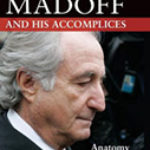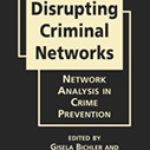Applied Police Research: Challenges and Opportunities

Editors: Ella Cockbain and Johannes Knutsson
Publisher: London; New York: Routledge, 2014. 176p.
Reviewer: Michael S. Scott | May 2015
Applied Police Research: Challenges and Opportunities is the latest volume in Routledge’s Crime Science series. It is an edited collection of chapters from authors who presented their draft chapters at a small conference in Stavern, Norway, where they critiqued one another’s works in order to polish them for publication. The volume editors, Ella Cockbain, a relative newcomer to applied police research, and Johannes Knutsson, a seasoned veteran of the field, endeavored to tap into the personal experiences of authors who have worked in research collaborations with police, thus eliciting a wealth of advice for other researchers who seek to do likewise. Cockbain and Knutsson also offer up their own experiences as well.
The unifying subject of the volume’s thirteen chapters is applied police research — a concept which while difficult to define with precision, encompasses research that entails some or all of the traits of being pragmatic, collaborative, flexible, contextual, and, above all else, helpful to the police institution. From the authors’ descriptions of their own police-research experiences, applied police research might focus on helping the police improve either their response to particular crime and disorder problems, or their administrative practices. Applied-research findings can variously be critical or complimentary of current police practices; but the overall tone and spirit in which findings are conveyed is intended to be helpful to police, and not merely critical. Although as several authors point out, such good intentions are not always received by police in that spirit, and there can be profound and painful consequences to researchers’ careers when they find themselves under police attack for their research findings.
This sort of applied research, as it is understood and described by the volume’s editors and authors, is meant to be distinct from at least two other types of police research. One is research that is largely theoretical and/or simply descriptive of police activity and policy. The other is research that is intended to be critical of police, but leaving it to police themselves to react to the criticism. Several authors here also seek to distinguish the sort of applied police research they have in mind from the kind of effectiveness research conducted under the rubric of evidence-based policing, arguing that research into police practices that is highly contextual, rather than general, is likely to be more helpful to police, and ultimately to society.
It is no coincidence that most of the volume’s authors are rooted in and proponents of problem-oriented policing and situational crime prevention — two theoretical constructs that explicitly call for applied-research methods, in the case of the former to help police improve the effectiveness of their response to substantive policing problems, and in the case of the latter, to reduce crime and disorder, irrespective of the particular police contribution to the effort. Problem-oriented policing and situational crime prevention being among the core theoretical constructs that comprise crime science obviously helps explain the linkage between applied police research and crime science.
One of the reasons that the authors’ descriptions of their personal experiences in applied police research are so useful in this volume is that, as nearly all of them assert in one way or another, applied police research is as much art as it is science; or if not quite art, then it is as much social as it is scientific. In his chapter, David Kennedy cites a need for more elaborate descriptions of the inherent “messiness” of police-researcher relationships and projects. Jack Greene analogizes police-research partnerships to that ultimate of social activities — dancing! All the authors discuss the centrality of establishing and maintaining good working relationships between researchers and police staff — relationships that entail mutual trust, mutual accommodation of one another’s interests, and mutual sensitivity to their occupational cultures. One doesn’t ordinarily associate the language of “trust, accommodation, and sensitivity” to the business of police work, but there it is, and if the authors are correct, as assuredly they are, attention to such matters is critical to the larger goal of improving policing and crime control.
As in any relationship, to pick up on author Jack Greene’s metaphorical theme, it takes two to tango. Ideally, this would mean that police officials would be as attuned to researchers’ interests as researchers are to theirs, although at this historical stage in their evolving relationship, it seems clear that the greater burden is on researchers than on the police. There are, of course, exceptions to this assertion, but from the authors’ accounts it would seem that researchers need the police more than the police would admit to needing researchers. And while times have indeed changed and continue to change, some police officials might conclude that the police have gotten along fine in their first century-and-a-half without having to accommodate the interests of researchers; and if researchers want police cooperation, they must obtain it on police terms. Much as we might like to believe otherwise, this viewpoint might well be accurate, if not correct. That is, until police see research as central to their own success, they will retain the upper hand in this relationship. And how central research is to police success is ultimately determined by those whose opinion of police most matters, namely the general public and their elected and appointed representatives. On this count, one still awaits the clamor from the public and government officials for reliable police research to tell them how their police are faring. In describing how police are often more sensitive to political and public pressure than they are to objective research findings, the authors are, in essence, testifying to the imbalance in the police-researcher relationship. In this volume, several authors also urge patience and understanding from researchers who sometimes fail to appreciate what police most keenly understand: that police are not judged solely by the measuring sticks of research; that their constituencies base their support of police on values, political preferences, and customs at least as much, if not more than, on research evidence.
Thus, at least for the time being, researchers are well advised to read and heed the wisdom contained in this volume. There is ample evidence that research, properly conducted, can indeed improve police effectiveness, efficiency, and fairness. And there is reason to hope that the public and their representatives will one day more fully appreciate this, and ultimately, demand of their police research-tested policy and practice. To hasten that day, though, researchers must continue their efforts to persuade police and the public alike of the value that research has to offer in improving policing, and thereby improving democratic governance. As David Kennedy opines, researchers need to work with police where they are, not where they wish them to be. But, as Kennedy would undoubtedly agree, several authors in this volume also make the case that improving the police-researcher relationship is not solely a matter of getting the police to better understand and appreciate the value of research to their work, but also a matter of getting researchers to better understand and deliver the sort of research that the police find helpful, and which ultimately is more likely to lead to real improvements in police policy and practice.
This volume makes a very nice addition to the growing body of literature on police-researcher relations. Each author contributes some important and distinctive insights and advice to the general themes that run through all of the chapters. Some authors offer useful ways of understanding the general relationship between academic theory and police practice; others offer quite specific advice to researchers as to how to make their working relationship with police as productive as possible. Gloria Laycock’s chapter takes a slightly different and important tack by addressing an oft-forgotten, but oft-critical third party in the police-researcher relationship, that of the government agency that might fund applied police research. She reminds readers that how a government agency designs and manages its police-research portfolio can spell the difference between dust-collecting research reports that police won’t even bother to read, let alone act on, and blueprints for actual improvement. Tamara Madensen and William Sousa’s description of an “unfunded” police-research portfolio in their community helps make the important point that government-funded research agendas or conventional academic publishing expectations can preclude researchers from providing police with the sort of applied research that might be most helpful. Several authors, including Eli Silverman, Johannes Knutsson, Stefan Holgersson, and Rick Brown, speak to questions concerning academic integrity, whereby researchers must balance their need to maintain police trust with the imperative of speaking the truth, and of their need to be seen by the public as a trusted police partner, yet not as a mere cheerleader, advocate, or apologist for all that police do.
The volume’s invited authors reflect British, American, Australian, Dutch, and Scandinavian experiences which, while not entirely global, are helpfully diverse. Whether a reader is new to police research or an old hand, they are likely to find something in this volume of interest and importance to their work.
Michael S. Scott, JD, Director of the Center for Problem-Oriented Policing, Chicago, IL


